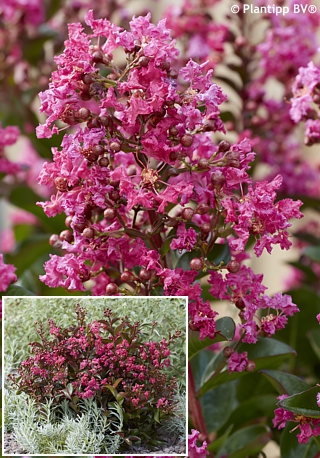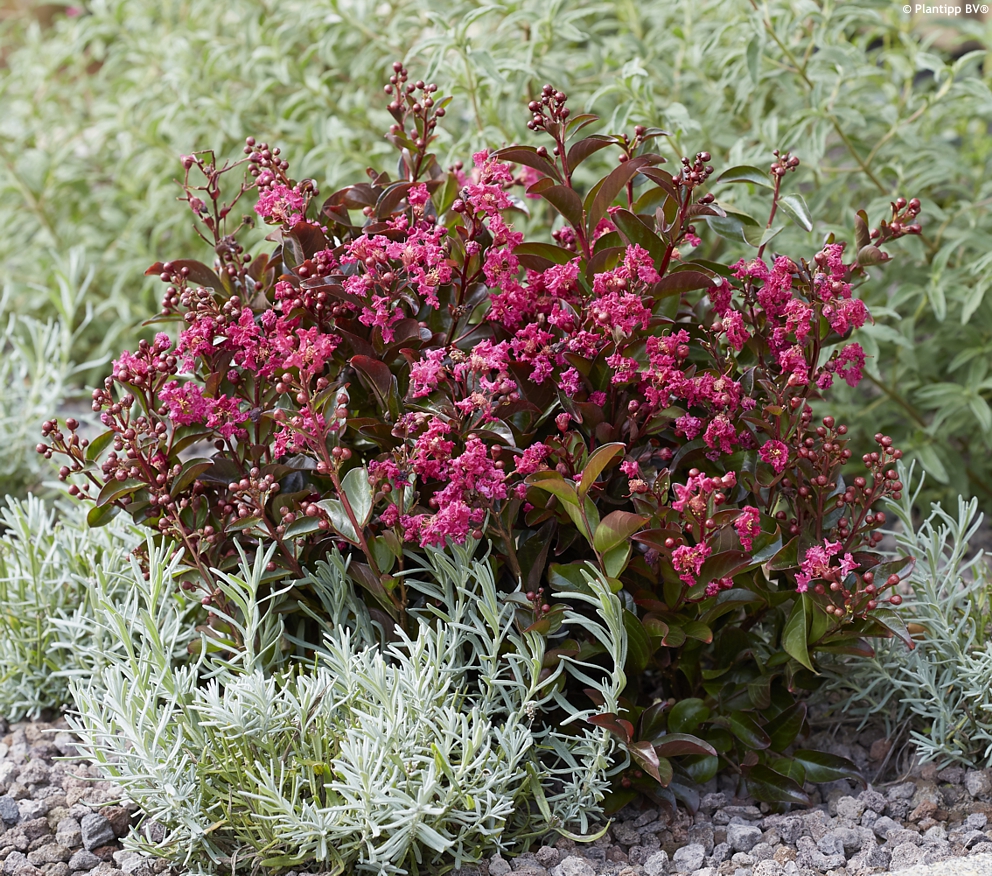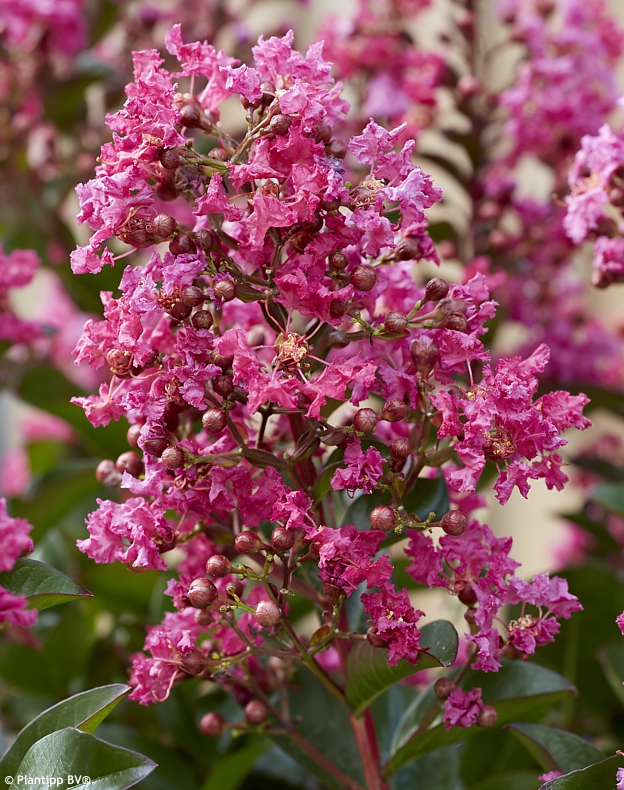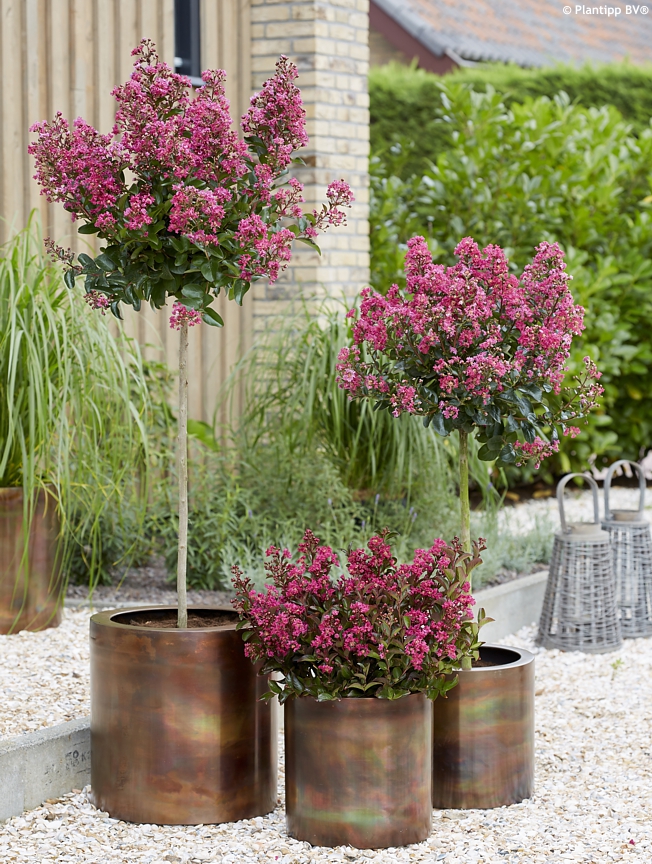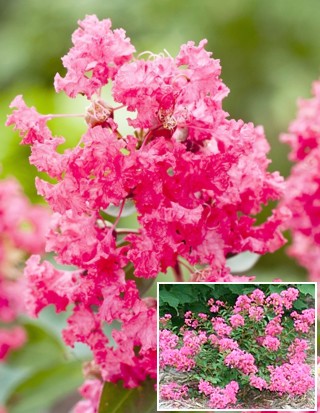Lagerstroemia 'Gamad VI' BERRY DAZZLE® crepe myrtle
Lagerstroemia
Crape myrtle is a flowering shrub or small tree from China. It was first introduced to the USA and the UK in the 18th century. The original plant lagerstroemia indica is too tender and not too pretty so breeders were working on further hybridization and the most attractive varieties available now are believed to be results of crossing with l.speciosa and l.fauriei. Far more important news for us is the fact that among those finished plants were selected others that survived lower temperatures than what was common in the areas of natural habitat so we have a few myrtles that can grow even in our climate. Some were selections, other consequent hybrids.
BERRY DAZZLE® is another crape myrtle introduction by Michael A.Dirr from Georgia, USA. It is a chance seedling of Pocomoke from 2002 forming small, compact and very dense shrubs with bright fuchsia pink flowers, composed in erect racemes from late July until early September (in C.E.). The deciduous leaves are leathery, oval, crimson red when they emerge, deep green as they mature, yet keeping burgundy red hues all summer through. They are powdery mildew resistant. In acid soil they gain fantastic fiery red and orange shades in autumn. When leaves fall off older plants reveal flaking-off bark, like plane trees or stewartias do, leaving a mosaic pattern on the smooth trunks. Patent No. PP22,161 was granted in 2011.
Crape myrtles need little care. They need full sun with zero shade during the day. Pruning will secure fresh growth and good flowering: cut back last year's growth to about a third of its original size. Do so in spring after danger of all frosts. The plant will make strong news shoots that will bear flowers. Grow it in well-drained soil that should be kept moist before it gets fully established. The soil should be very well-drained and fertile. It needs heavy mulching in winter and some mulch in summer to retain moisture. Overfertilizing will cause excessive growth but no flowers. Above ground wood is hardy to about -21°C (USDA zone 6b), and roots and near ground woody structure withstands -25°C.
Last update: 16-08-2020

































